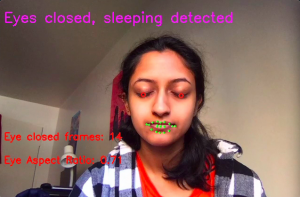We finished our final presentation in which Evann presented on Monday. We also worked on our final demo video and poster which are almost completed. Lastly, we have completed our car set up which includes a small box placed in the car dashboard with the screen being held up by a phone holder.
- Significant Risks: At this stage there is not many significant risks that can jeopardize our project. There are small things such as improving testing and our dataset.
- Changes to the Existing Design: No changes for this week except we did add
- Schedule: There are no changes to the schedule

